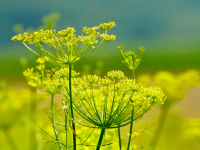Videos
Search >>
(HPTLC) has established itself as the preferred analytical tool for identification of botanical samples. As with any analytical method, validating the HPTLC method is crucial to ensure that it produces reliable, accurate, and reproducible results. In this article, we will explore the process of HPTLC method validation, why it is necessary, and the critical parameters to consider.
As winter melts away and the promise of spring invites renewal, it's the perfect time to think about new beginnings, especially when it comes to nurturing our bodies. Join us as we embark on a journey exploring plants that promote women’s health and well-being.
October 2024 - Eurofins Botanicals is proud to announce the first-of-its-kind partnership with LeafWorks to launch the industry’s first Mushroom DNA Species Identification Tests. The first DNA ID tests will focus on Shiitake and Cordyceps species, with additional mushroom tests being released in 2025.
On-Demand Webinar: Botanical Identity Testing: Meet Your Identity Testing Partner for All Your Needs
In this on-demand webinar Cris Amarillas will guide you through the essentials of botanical identity testing. Original Air Date October 16, 2024.
HPTLC is a popular method for botanical identification. Click the image below to open a video and learn the basics of HPTLC and how it can benefit your products.
Eurofins Central Analytical Laboratories (CAL) offers unrivaled expertise and an ISO 17025:2017 accreditation for all aspects of tea testing, including dried and fresh tea analysis, brewed service testing, and pesticide analysis. This flyer provides an overview of ECAL's tea offerings and the benefits of testing with Eurofins.
This blog explores botanical fraud, differences between fraud and adulteration, and the use of mitigation plans to prevent fraudulent ingredients and products. Learn about the common types of fraud and steps to take to ensure safe and accurately labeled products.
Botanical supplement contamination can be dangerous, and preventing contamination starts with understanding its sources. This infographic explains different sources of contamination in a botanical supplement's life cycle - from growing in the soil to packaging and storage.
Gummy supplements continue to trend among consumers, but this matrix can be challenging to test. How does Eurofins address these challenges? Read about the answer from Jeff Stassi, Sr. Analytical Services Manager with Eurofins Food Chemistry Testing in Madison, WI.
Phytochemicals are chemicals derived from plants used to test the purity, composition, adulteration, and potency of botanical products. Discover how plant chemistry shapes and motivates botanical product authentication.
















